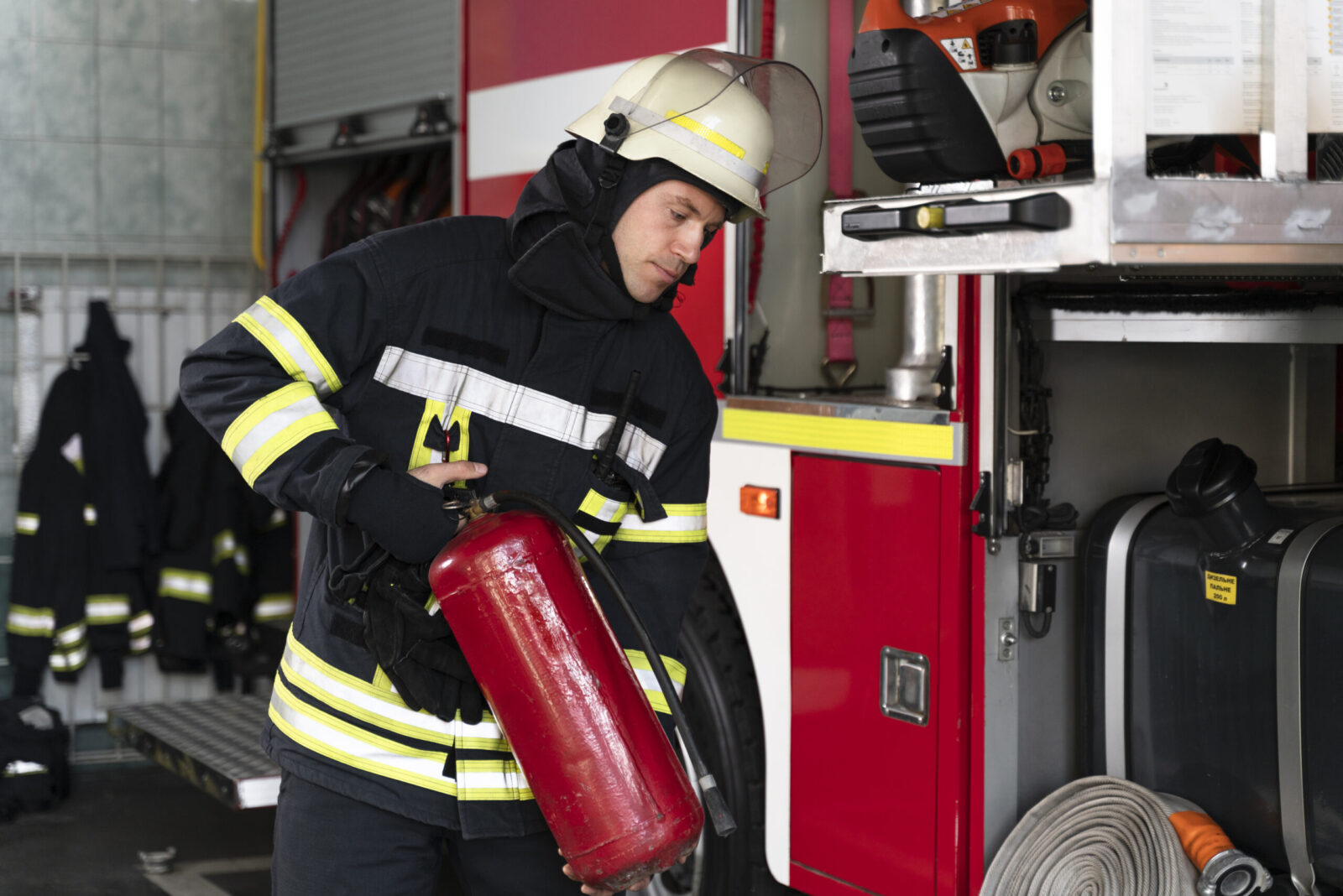
Essential PPE in the Food Industry: What You Need to Know
Overwhelmed by PPE options for food safety? Master your PPE selection for food workers safety with these practical tips.

Get 20€ off on your first order!
Fire safety is an essential aspect of occupational and public safety. Selecting the right fire safety equipment can mean the difference between effectively managing a fire emergency and facing catastrophic consequences. This guide will walk you through the key factors to consider when choosing fire safety equipment for industrial, commercial, and residential settings across Europe.
Fire safety gear is very important for keeping people and property safe, putting out fires when they happen, and avoiding them in the first place. Following the rules and standards for fire safety lowers risks and shows that you follow European safety guidelines.
Fire safety equipment is very important for keeping people and property safe, putting out fires when they happen, and avoiding them in the first place. Following fire safety rules and standards lowers risks and shows that you follow European safety guidelines.
These systems are the first line of defense, alerting individuals to potential dangers early.
These tools help control or extinguish fires.
PPE ensures the safety of individuals in fire-prone environments.
Fire safety equipment must comply with standards set by European bodies like the European Committee for Standardization (CEN). Familiarity with these standards ensures you choose reliable and compliant equipment.
Investigate any fire risks carefully to grasp their nature. Point up places likely to experience fire occurrences, the kinds of things kept, and the degree of human activity within the space.
Different fire safety tools are designed to handle specific fire types. For example:
The size and layout of the building determine the quantity and type of fire safety equipment needed. For instance, large industrial facilities may require extensive sprinkler systems, while smaller offices may suffice with portable fire extinguishers.
During times of crisis, it is extremely important that fire safety equipment be user-friendly. Make sure your staff is well-trained to operate the machinery.
Regular maintenance is crucial to ensure the reliability of fire safety equipment. Opt for tools that come with clear maintenance guidelines and support services.
| Type of Fire Extinguisher | Suitable For | Limitations | Common Applications |
| Water | Class A fires | Not for electrical or flammable liquids | Offices, schools, homes |
| Foam | Class A and B fires | Not suitable for gaseous fires | Warehouses, factories |
| CO₂ | Electrical fires | Limited duration of discharge | Server rooms, offices |
| Powder | Class A, B, and C fires | Residue cleanup required | Garages, workshops |
Find all the possible fire risks and put them in order of how dangerous they are.
Ensure proper placement of fire extinguishers, alarms, and PPE based on your risk assessment.
Provide hands-on training on how to use fire safety tools and follow evacuation procedures.
Set up regular checks to make sure all of the equipment works and meets European standards.
Conduct fire drills to test the effectiveness of your safety plan and familiarize staff with emergency protocols.
Fire extinguishers should be professionally serviced once a year and at least once a month checked.
Yes, fire alarms must comply with the EN 54 standard, and their installation must follow national guidelines.
Used tools should be thrown away at authorised recycling centres or sent back to the company that made them so they can be thrown away properly.
No, fire extinguishers are designed for specific fire classes. Check the label to ensure suitability for the fire type.
Instead, you could install a movable fire suppression system and make sure that fire extinguishers are easy to get to.
Ensuring safety and compliance depend critically on selecting the right fire safety equipment. Understanding your fire hazards, using appropriate gear, and following European regulations will help you to build a safer surroundings for all. See local authorities or fire safety professionals for more specific guidance to be sure all actions comply with legal criteria.
Thank you! You've signed up for our newsletter.



















Overwhelmed by PPE options for food safety? Master your PPE selection for food workers safety with these practical tips.

Struggling to maintain clear vision in demanding environments? This guide is here to help. By the end, you’ll know exactly...

Electricians across Europe face unique challenges that require reliable safety glasses to ensure both protection and efficiency. Whether safeguarding against...

Overwhelmed by PPE options for food safety? Master your PPE selection for food workers safety with these practical tips.

Struggling to maintain clear vision in demanding environments? This guide is here to help. By the end, you’ll know exactly...

Electricians across Europe face unique challenges that require reliable safety glasses to ensure both protection and efficiency. Whether safeguarding against...
Get 20€ off on your first order!
Save 30% by buying directly from brands, and get an extra 10€ off orders over €100
Save 30% by buying directly form brands, and get an extra 10€ off orders over €100